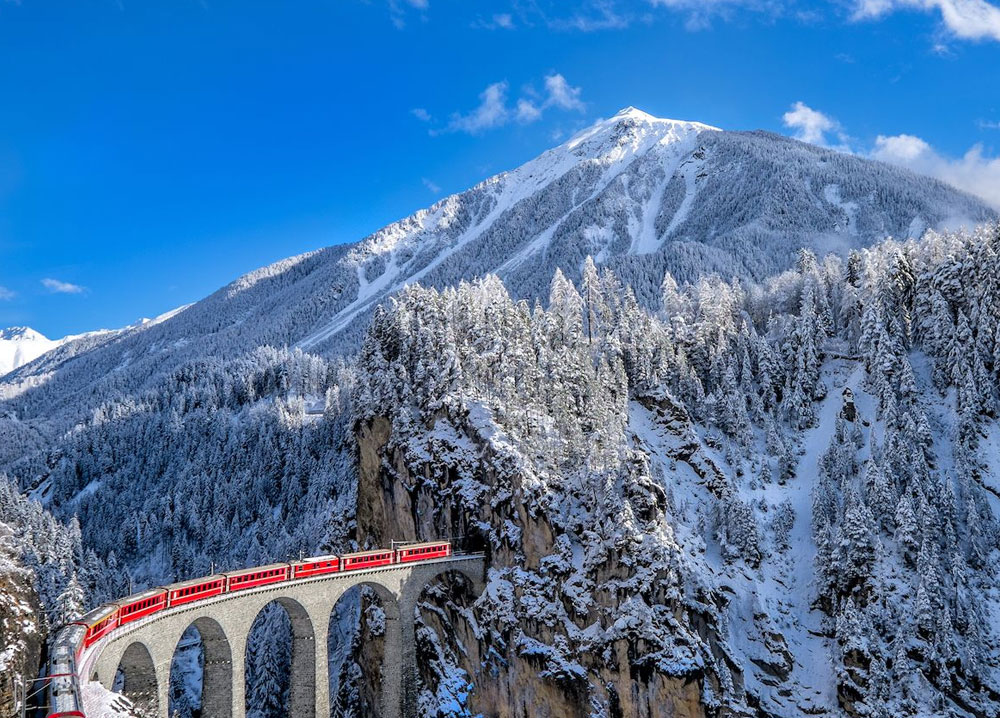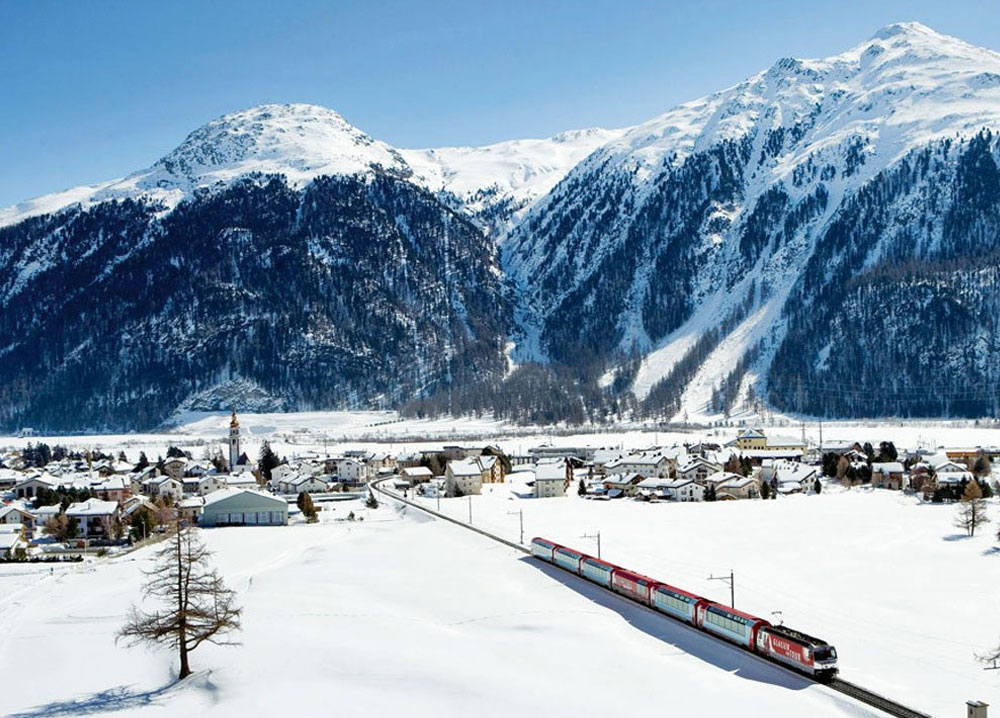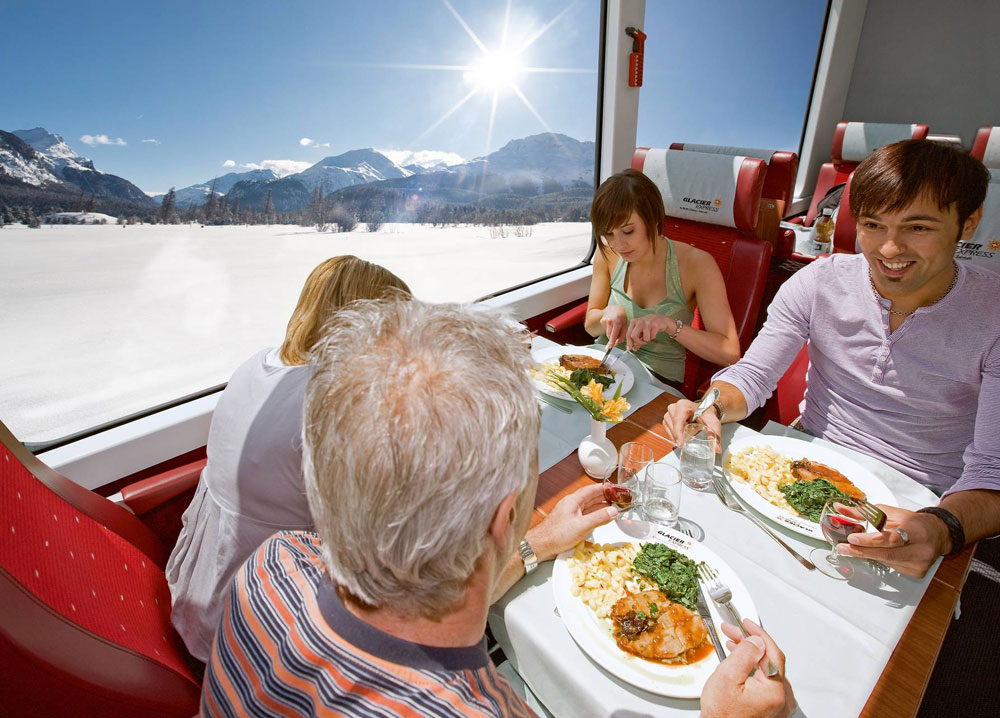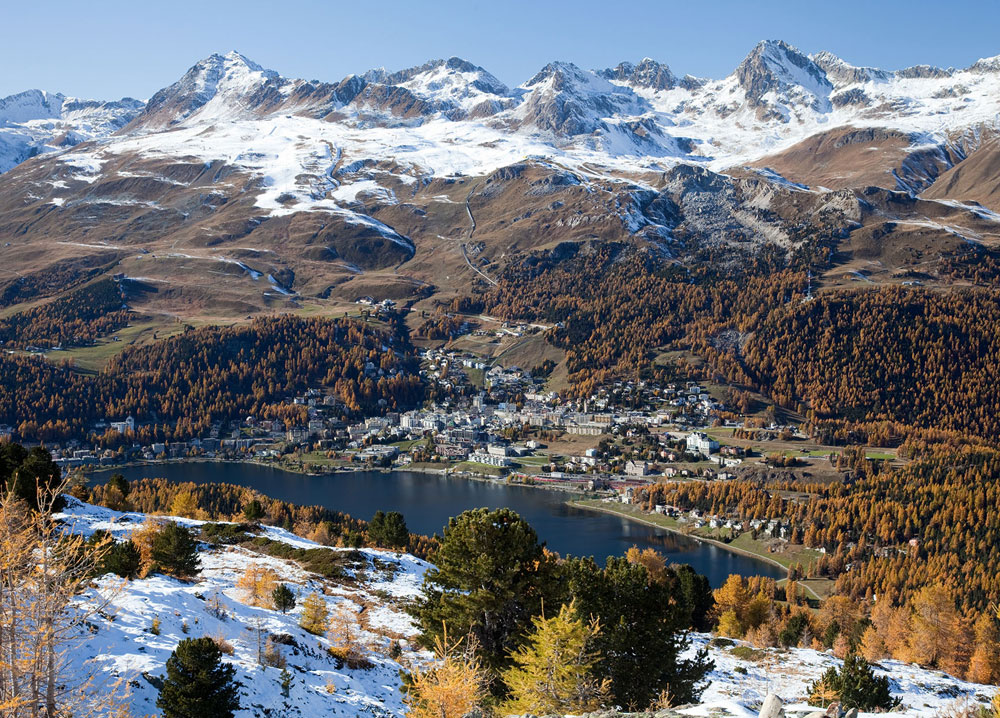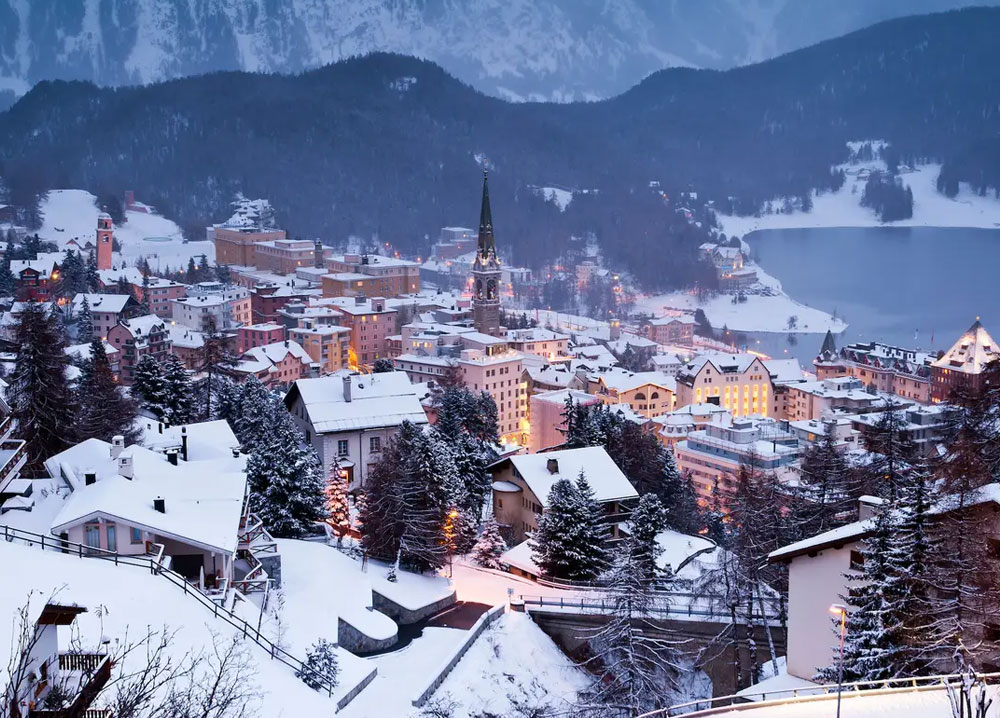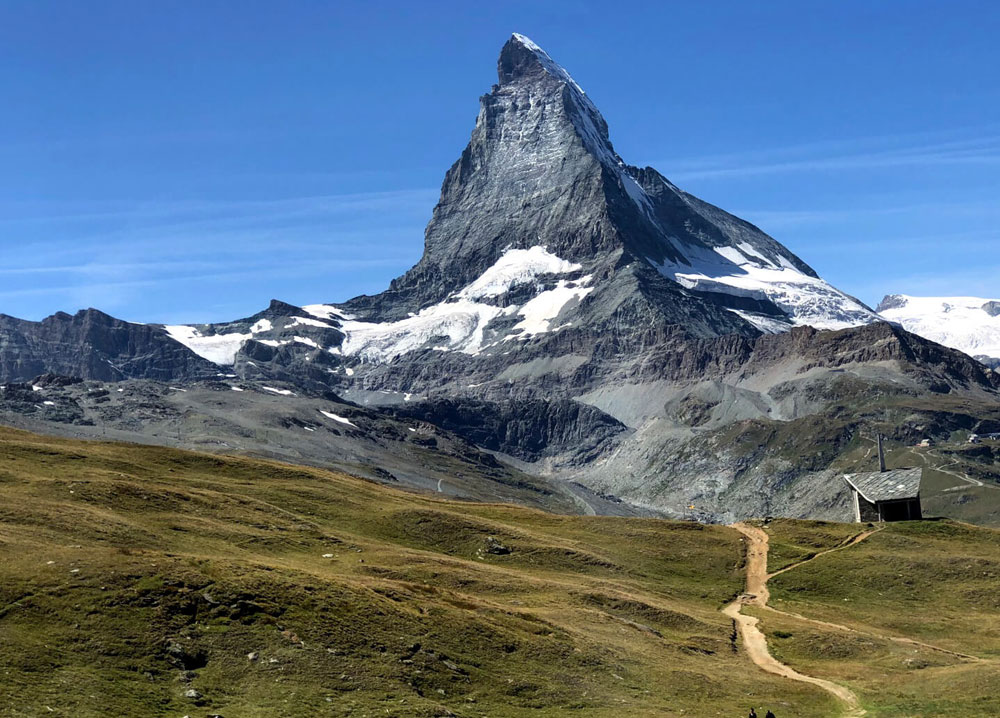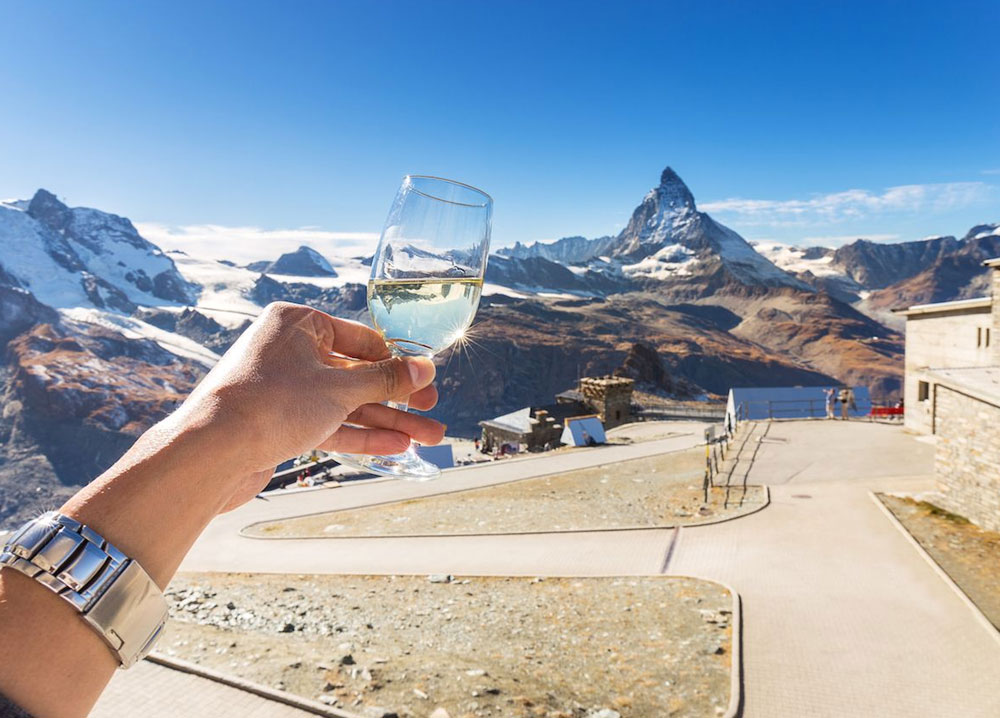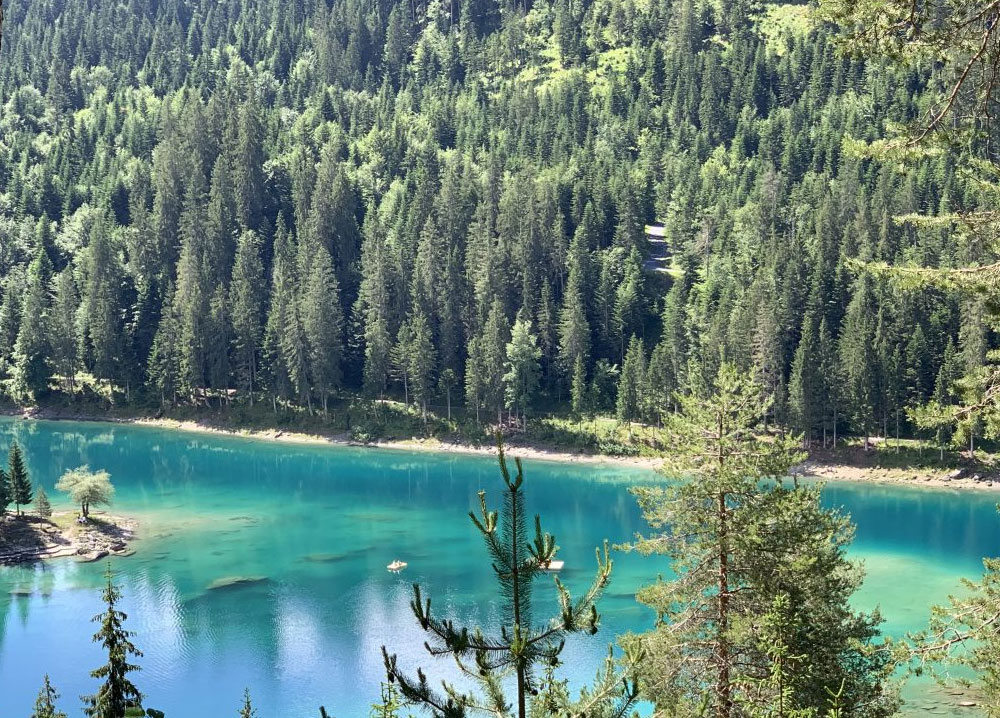Switzerland in December – Take The Glacier Express
If you are gearing up for a fairytale-like adventure here, take the famous Glacier Express – it is a direct train from Zermatt to St. Moritz. This isn’t your usual train ride but a wholesome adventure.
The train is often referred to as the slowest express train in the world: the journey takes about 8 hours to complete its trip.
There is a good reason for this slow pace: the train squeezes its way through the Alps, through narrow valleys, tight curves, 91 tunnels, and across 291 bridges.
You are not required to travel with the Glacier Express of course and can enjoy the scenery of the Glacier Express route by regular train services on the same line. The regular trains do not offer the panoramic windows and the same level of comfort, but other than that, you can see the landscape just as well.
If you are taking the Glacier Express, then you’ll be traveling in four sections.
Section 1: Zermatt to Brig.
Strap yourself in for a trip of a lifetime. Your journey starts near the Matterhorn, in the car free mountain village of Zermatt, at an altitude of 1605 metres.
The Matter valley leads to the town of Visp and is quite narrow at many places, with massive rock walls rising up to well over 4,000 metres. Here, you’ll find the highest peaks of the Swiss Alps.
Once Visp has been reached, the train has descended to 651 metres. And a short flat stretch from here leads to Brig.
Section 2: Brig to Andermatt.
Next, the train crosses the river Rhone a few minutes after departure from Brig, and continues its way east into the Upper Rhone valley. Again, the V-shaped valley is very narrow sometimes.
At the end of the valley, in Oberwald, the train has reached an altitude of 1366 metres.
The view from the right side of the train is slightly better, but there’s no major difference.
Section 3: Andermatt to Chur.
Andermatt, 1436 metres above the sea, is where the Oberalp Pass begins. The train winds its way upwards to 2034 metres, the highest point of this journey. This is where the river Rhine rises.
The landscape here is usually covered in snow from November to April. The road is closed during that period. Next up is a long descent along the Rhine valley to Chur – the lowest point of the route at 585 metres. The landscape looks very dramatic in the Rhine gorge between Ilanz and Reichenau, where the river carved deep into the white rocks.
This region is also referred to as the Swiss Grand Canyon. Sit on the left side of the train if you can.
Section 4: Chur to St. Moritz.
The Glacier Express changes direction here and heads for Reichenau again. There it bends to the south, towards Thusis and Tiefencastel. The Domleschg valley here is known for its many ruins and castles.
The Glacier Express continues south through a mostly narrow valley, crossing the spectacular curved Landwasser viaduct just before it reaches Filisur. Then several spiral loops help it gain height until it reaches the entrance of the Albula tunnel, at 1789 metres. This section of the route is very interesting to explore on foot as well.
Another 20 minutes and you reach your destination at St. Moritz. You can best sit on the right side of the train to enjoy the view on the Landwasser viaduct.
There are a couple of alternatives to the standard route here. Get in touch with our team of travel planners to help you design your Swiss adventure.
To enrich your train ride, we’ve collected a few stunning destinations to pay attention to on your trip.
St. Moritz, the most elegant holiday resort in Switzerland
St. Moritz was the first all-round winter-sports resort in the world and, 150 years since its birth as a tourist destination, still boasts a myriad of on and off-snow activities from skating and bobsleigh to ice cricket. But it is more than just a spa town, more than just a winter sports destination, more than just a magnet for countless celebrities, artists and aristocrats.
The history of St. Moritz as we know it today began in 1864, when hotelier Johannes Badrutt made a bet with some of his British guests. He promised them that, in addition to the gorgeous summers, winter in St. Moritz is so pleasant that on clear days you can enjoy the sunshine on the terrace without wearing a jacket. If he turned out to be wrong, the hotelier promised to pay their travel costs and accommodation. The following December, the group of British men crossed the Julier Pass covered from head to toe in furs. Upon arrival in St. Moritz they were met by blue skies, warm sunshine and Badrutt, who stood waiting to greet them without a jacket and with rolled up sleeves. Winter tourism was born.
St. Moritz continued making history throughout the modern era. It was here that Switzerland’s very first electric light was switched on and the country’s first electric tram took to the tracks.
St. Moritz is one of the destinations you absolutely must visit and spend some time taking in. It’s guarantees to leave you speechless and inspired.
The alpine village of Zermatt with breathtaking views of the Matterhorn
The Zermatt area is extremely picturesque, car-free and offers spectacular views of the Matterhorn and 28 other 4,000 metre peaks surrounding the mountain village. Known as the Matterhorn Ski Paradise the united Zermatt, Cervinia and Valtournenche ski areas offer one of the largest skiable domains in the world. The name Zermatt is from a German word “matten” or valley. The name first appeared as Zur Matte or at the meadow and later became Zermatt. It didn’t appear on maps until 1495 and then 1546 in texts. Zermatt was actually an agricultural community until the mid 19th century. After the first and tragic ascent of the Matterhorn in 1865, people came in to Zermatt, leading to the construction of many tourist facilities. To prevent air pollution and to prevent obscuring the town’s view of the Matterhorn, the entire town is car-free zone today. From the Lake Riffelsee to the summit of the Matterhorn, this is a gorgeous destination to explore.
The Rhine Gorge
A trip to the Rhine gorge is a must for any visitor to the Surselva valley. Today’s 13-kilometre-long gorge, in places as much as 400 metres deep, is the product of a cataclysmic geological event, the Flims rockslide, which took place 10,000 years ago. You can explore this natural wonder from the water, on foot, or by bike, car or train.
We offer multiple tours in Switzerland; and would gladly help you design your experience here including your rail tickets.
If you want help picking your best Switzerland experience, just give our team a call on 1800 242 353.

